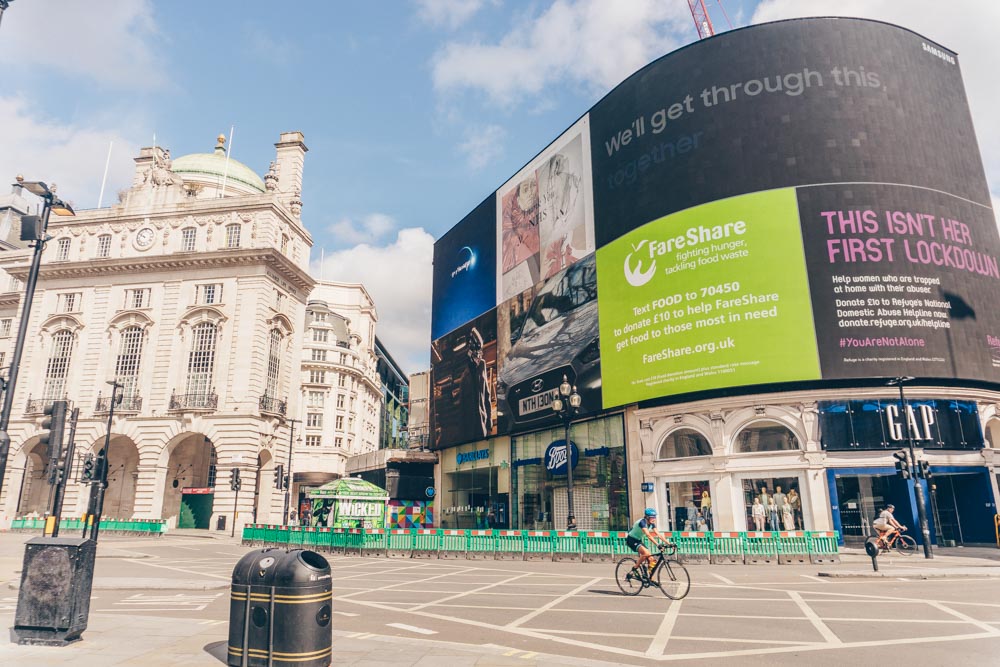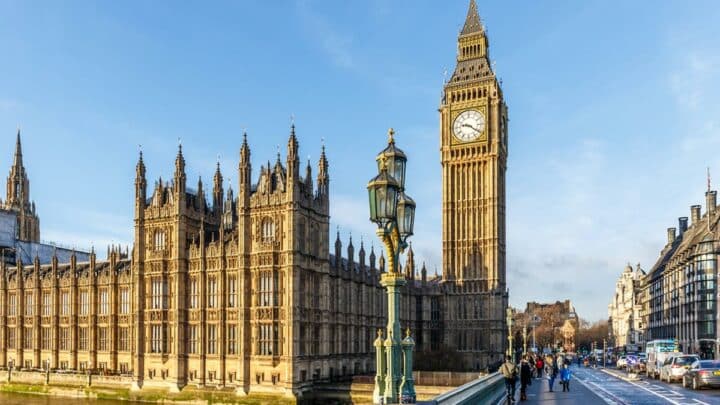
Hidden in plain sight, St. Stephen’s Tower has a rich and illustrious history at the heart of London life. In fact, you already know more about St Stephen’s Tower than you think.
Words by John Rogers
Or do you?
There’s a great mystery surrounding St Stephen’s Tower, with experts split on exactly where St. Stephen’s Tower stands. One thing’s for sure: Situated in Westminster, this tower has a very famous face.
Intrigued? You should be.
Let’s take a step through Victorian London and into the present day as we uncover the secrets of St. Stephen’s Tower in London.
Why Visit St. Stephen’s Tower?
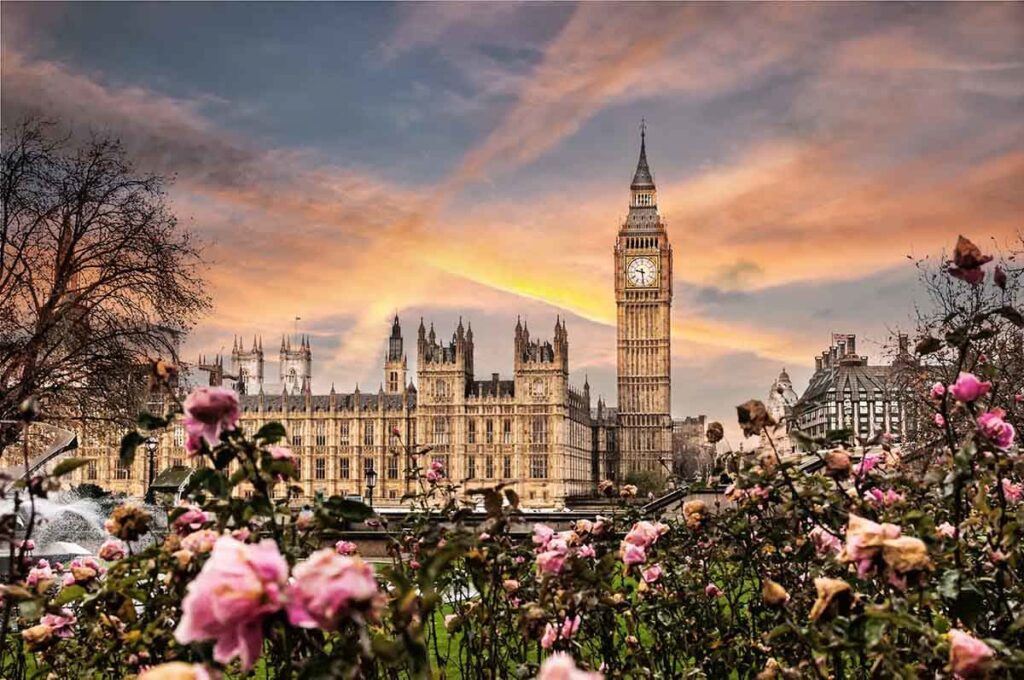
Before planning a visit to St. Stephen’s Tower, we need to unravel the mystery of where it is.
Everyone agrees that the tower forms part of the Palace of Westminster, better known as the Houses of Parliament. However, there is some dispute as to which tower is St Stephen’s.
The purist will tell you categorically that St. Stephen’s Tower is a tower that stands at the public entrance to the Houses of Parliament. They’ll also likely point out that anyone who states that St Stephen’s Tower is the big famous clock tower that houses Big Ben is a by-product of lazy Victorian journalism.
We’re usually a stickler for rules, but on this occasion, we’re happy to clamber aboard the bandwagon and refer to this most famous of London landmarks to guide you to St Stephen’s Tower.
Now we’ve established where ‘St Stephen’s Tower’ is, let’s examine why you should visit.
The Centenary
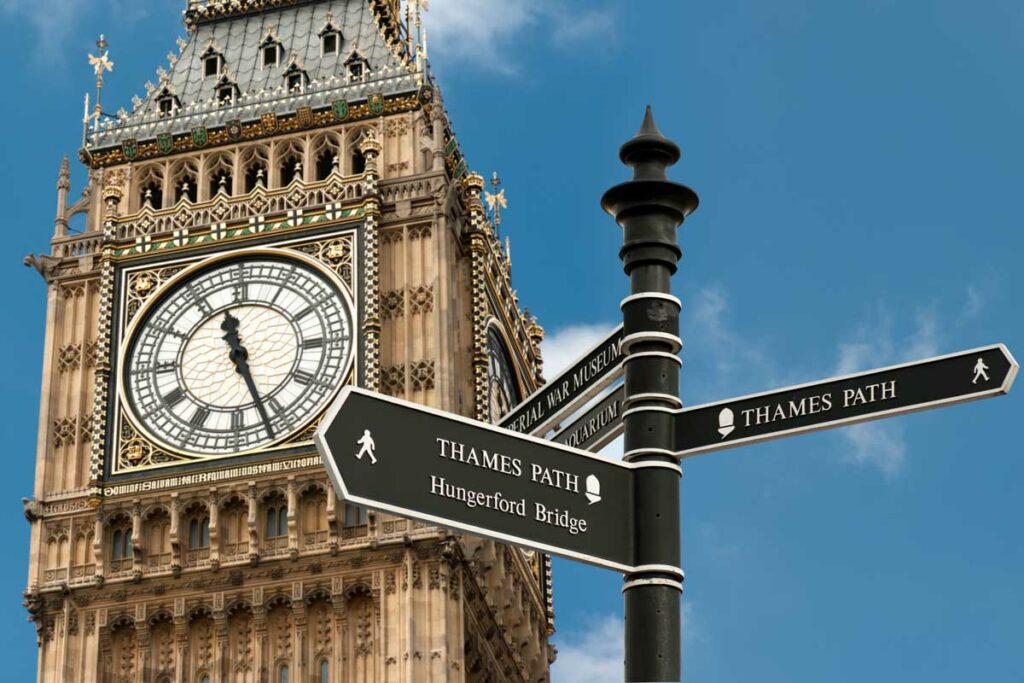
2024 marks the centenary of the first chiming of Big Ben’s chimes as a timing signal by the BBC. Since then, with relatively few interruptions, listeners to BBC Radio have grown used to the chimes to signal news broadcasts worldwide.
Imagine standing next to the 15.1-tonne colossus as it chimes to let Londoners know the change of the hour.
Once restoration work on Big Ben and the installation of new exhibits are officially complete (it feels like we’ve been waiting decades, we know), free tours of St Stephen’s Tower will recommence later in 2023.
The History of St Stephen’s Tower
Ok, so now we’ve settled the debate on what St Stephens’s Tower is, let’s take a little look at its history.
A Striking Design
Augustus Pugin was responsible for the design of the tower, which was in the classic neo-gothic style that dominated mid-19th-Century London and was completed in 1859.
The 316-foot-tall design included the world’s largest and most accurate four-faced striking clock, just as you’d expect in an era where “biggest” was best.
Each of the four clock faces contains an emblem to represent one of the constituent nations of the United Kingdom. A rose for England, a thistle for Scotland, a leek for Wales, and the Irish shamrock.
Big Ben
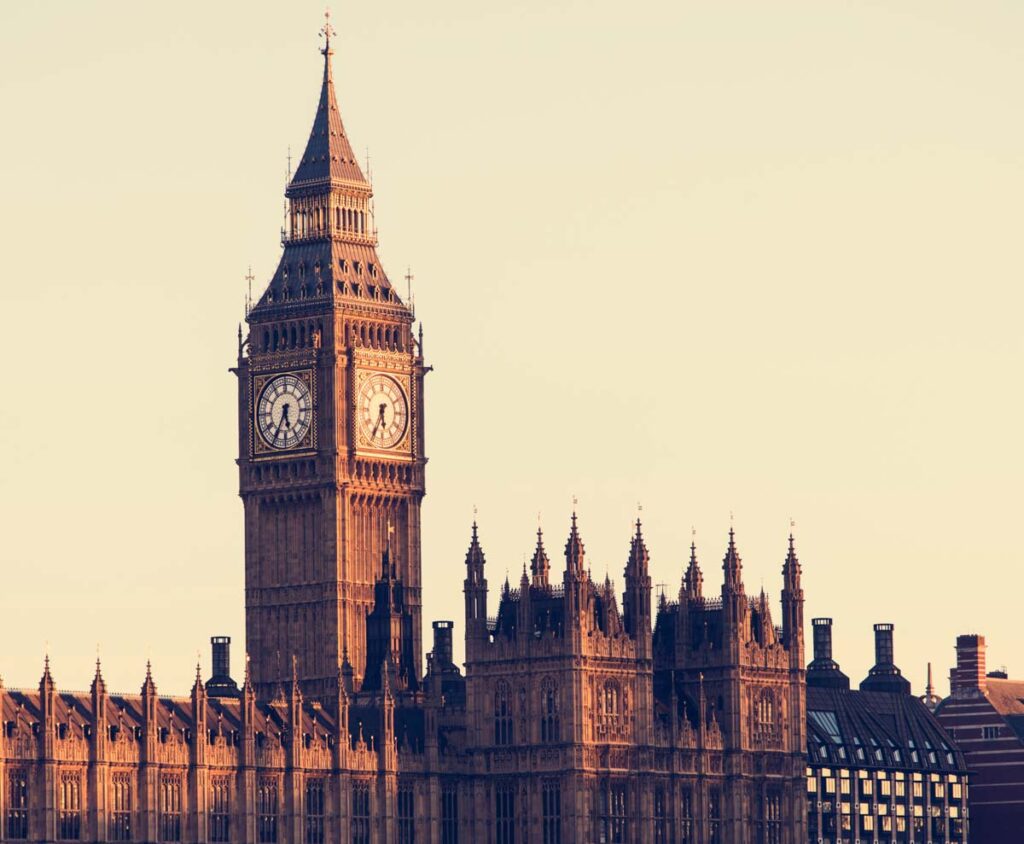
The tower also houses the 15.1-tonne behemoth, Big Ben, the bell that strikes every 15 minutes and which anyone within a five-mile radius of the palace of Westminster can hear.
The clock retains its original Victorian-era mechanism but does have a backup electrical motor in case of malfunction.
Big Ben was the largest bell in the UK for its first couple of decades. However, the origins of how the bell gained its name are, predictably, shrouded in mystery.
Some believe it gained its name in honour of Sir Benjamin Hall, who supervised its installation. Meanwhile, others offer credence to the rumour that the monster was named for heavyweight boxing champion Benjamin Caunt.
Incidents, Breakdowns and Damage
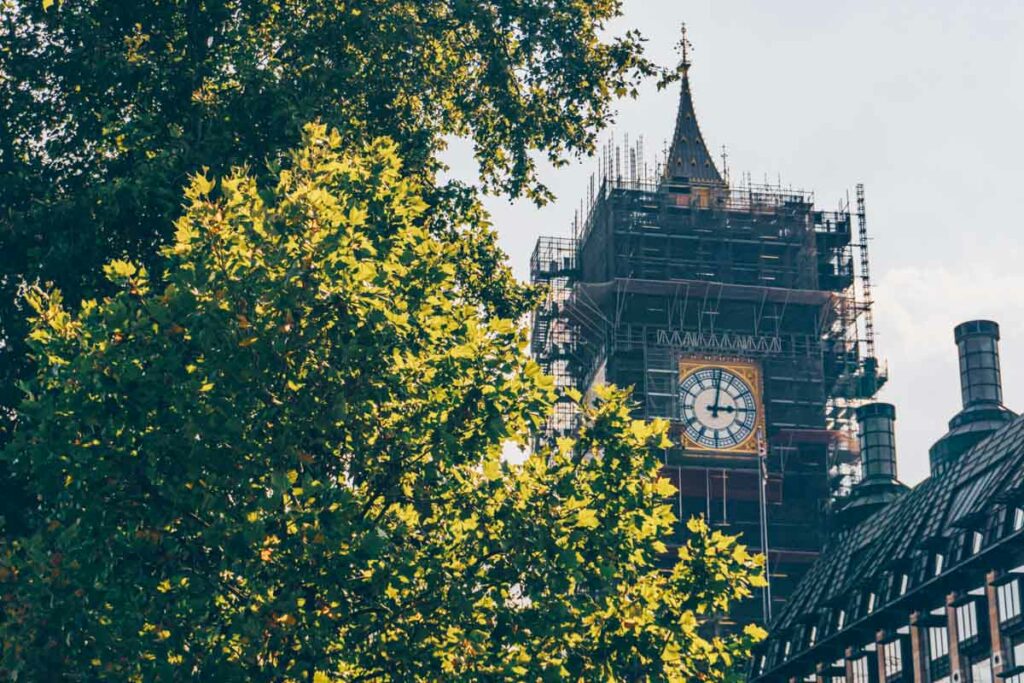
Clock breakdowns in the first fifty years of its existence were few and far between. However, two incidents in 1878 and 1900 saw the clock stop due to a heavy snowfall that stopped the hands from moving.
In 1916, the bells fell silent for two years, and the lantern that lit the clock face dimmed to ensure that the light didn’t guide German Zeppelin raiders to London targets.
At 11 am on 11th November 1918, Big Ben again chimed to signal the Western Front’s truce.
Twenty years later, a painter’s ladder stopped the clock for just over an hour after they leaned it against a shaft that drove the clock’s hands. Londoners gazed with furrowed brows at the amount of time 8:47 am lasted.
Then, in September 1939, with the outbreak of World War II, the lanterns that illuminated Big Ben dimmed once again to ensure the Luftwaffe wasn’t guided to the heart of London.
Sadly, the tower was damaged in a Luftwaffe raid on 10th May 1941 that destroyed the Palace of Westminster and badly damaged two of the clock faces.
St. Stephen’s Tower or Elizabeth Tower?
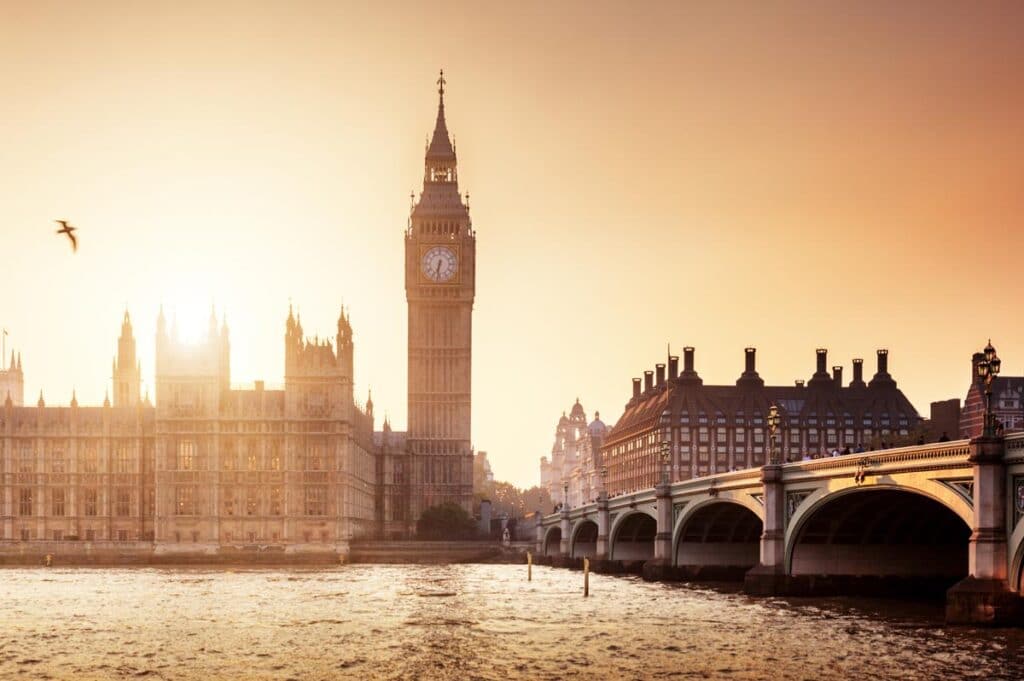
The tower, originally known simply as the Clock Tower, gained its name from journalists during the reign of Queen Victoria, who, for the sake of simplicity, named anything to do with Parliament “St Stephen’s….”
This was because, at that time, the House of Commons sat in St Stephen’s Hall.
The erroneous moniker remained in place until 2012 when the tower was formally renamed Elizabeth Tower for Queen Elizabeth II’s Diamond Jubilee. This followed the naming of Victoria Tower at the western end of the Palace for Queen Victoria’s Diamond Jubilee in 1897.
In 2017, St Stephen’s Tower, the Clock Tower, or Elizabeth Tower, underwent an enormous programme of renovation that was finally completed in November 2022.
St Stephen’s Tower: Practical Information
Address: Palace of Westminster, London, SW1A 0AA
Opening Times: Currently closed to the public until later in 2023
Tickets: Free

